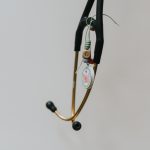Your ongoing practice improvement journey
When thinking about how to complete your three activities every five years and meet the requirements of the Physician Practice Improvement Program (PPIP), it may be difficult to know where to begin. But we can help!
To provide some inspiration as you embark on your improvement journey, we have some examples of PPIP activities listed below. These are actual activities and action plans completed by physicians in Alberta and we thank them for the opportunity to share their hard work with their physician colleagues.

Practice-Driven Quality Improvement
A practice-driven PPIP activity requires the use of data to identify opportunities for improvement, then the development of an action plan. Facilitation is recommended, but not required.
Anesthesia
Sources of data reviewed: Patient charts, anesthesia dashboard
Opportunity or gap: Post-operative nausea and vomiting after anesthetic at 14.2%.
Goal: Reduce to less than 10% over the next six months.
Communication Gaps (Non-Clinical)
Sources of data reviewed: Clinic communication processes, return-to-work timeframes
Opportunity or gap: Communication gaps leading to delays in returning staff to work.
Goal: Ensure all staff is educated on process, with regular, random audits performed.
Complaints Process (Non-Clinical)
Source of data reviewed: Clinic complaint data
Opportunity or gap: Complaint responses take months to respond in clinic.
Goal: By the end of December 2024, complaint resolution process will be developed.
Colorectal Cancer Screening
Sources of data reviewed: EMR and HQCA panel reports
Opportunity or gap: Colorectal Cancer (CRC) screening rates are 65%, compared to average of 75% in my Primary Care Network (PCN).
Goal: Improve CRC screening rates to PCN average over the next year.
Policies (Non-Clinical)
Source of data reviewed: Clinic policies
Opportunity or gap: There are multiple policies on the same topic. These policies are over five pages long and very complex to understand.
Goal: Review policies annually and ensure all stakeholders are involved in review process. By the end of March 2025, reduce the number of policies from 10 to five.
Prescription Changes
Source of data reviewed: EMR patient profiles
Opportunity or gap: Receiving an average of five requests monthly for prescription changes due to antibiotic allergies.
Goal: Reduce the number of prescriptions changes by 50% within one year.
Sepsis Clinical Guidelines
Source of data reviewed: Patient charts
Opportunity or gap: A review of 20 cases of suspected sepsis in the ER revealed four cases in which blood cultures were not drawn before antibiotics were given.
Goal: Improve adherence to guidelines to 90% over the next year and better understand the barriers to early blood culture.
CPSA Standards of Practice Quality Improvement
The standard of practice PPIP activity involves reviewing a CPSA standard of practice, reflecting on whether you are meeting its requirements in your practice, then developing an action plan to implement identified improvements.
Code of Ethics and Professionalism (Non-Clinical)
CPSA standard of practice reviewed: Code of Ethics and Professionalism
Opportunity or gap: Unfamiliarity with the Code of Ethics and Professionalism.
Goal: Be able to understand and demonstrate the key points of the Code of Ethics and Professionalism in one year, through personal assessment and peer feedback.
Continuity of Care (Episodic)
CPSA standard of practice reviewed: Continuity of Care
Opportunity or gap: Concerns about how the group responds to clinically important results received after the patient has left the emergency department, walk-in clinic or urgent care. With the increase in unattached patients, it is insufficient to direct patients to follow up with their family physician.
Goal: Improve follow-up of abnormal results and decrease burden on individual physicians.
Disclosure of Harm
CPSA standard of practice reviewed: Disclosure of Harm
Opportunity or gap: Physicians involved in clinical-adverse events are not consistently being offered supports.
Goal: Ensure 100% of physicians involved in a disclosure-of-harm procedure are offered support in writing.
Patient Record Content
CPSA standard of practice reviewed: Patient Record Content
Opportunity or gap: Of 20 randomly-selected charts, 50% have incomplete health context information.
Goal: Improve documentation of current problem list and medication list of cumulative patient profiles, so that 75% are complete in one year on a repeat chart review.
Referral Consultation
CPSA standard of practice reviewed: Referral Consultation
Opportunity or gap: Of 10 randomly-selected consult letters, 50% were not sent back to the referring physician within 30 days from the date of the consult.
Goal: Improve office processes to facilitate more timely communication of consult letters, so at least 75% meet SOP requirements in one year on a repeat chart review.
Personal Development
PPIP’s personal development activity requires physicians to reflect on personal or formal feedback data, mandatory facilitation of the data to identify opportunities for improvement and development of an action plan.
Implicit Bias
Feedback/self-reflection data used: Implicit bias training
Type of facilitation: Peer-to-peer
Opportunity or gap: Implicit bias may be affecting medical decisions and patient outcomes.
Goal: Decrease implicit bias in team over the next year.
Learner Feedback
Feedback/self-reflection data used: Learner feedback data
Type of facilitation: Experienced preceptor colleague or site academic director
Opportunity or gap: Initial review of data reveals a lower-than-average score to question My preceptor is providing feedback.
Goal: Provide learners with more regular feedback, increase score.
Questions about PPIP? Interested in sharing your own activity?
Phone: 780-969-4986
Toll-free: 1-800-561-3899 ext. 4986 (in Canada)



















